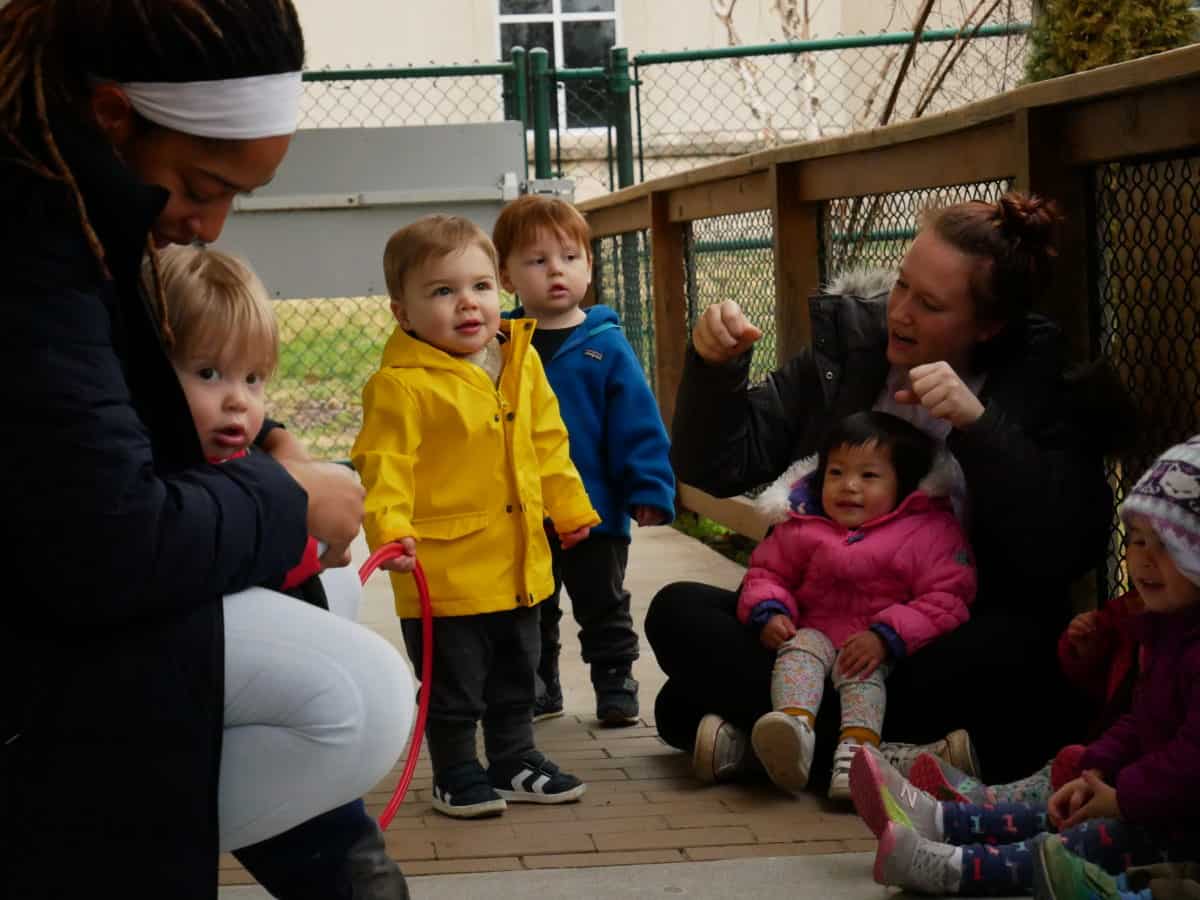
|
|
A bill working its way through Congress would infuse early care and education programs with unprecedented levels of federal funding.
Meanwhile, programs are struggling to hire and retain teachers. North Carolina child care centers were searching for an average of 4.5 teachers in September (compared to a total average teaching staff of 9), found a survey from the North Carolina Child Care Resource and Referral (CCR&R) Council.
The funding in the Build Back Better Act would be a game-changer for young children, families, and teachers, said Dan Wuori, senior director of early learning at The Hunt Institute. It would ensure child care teachers are making livable wages and establish pay parity between early childhood teachers and elementary teachers with similar credentials.
“On the presumption that North Carolina and other states are going to move forward and that this is passed, it’s going to fundamentally reshape what it means to be a part of this profession,” Wuori said.
However, the act is not yet passed, and the particulars of the bill are in flux. The implementation of the funding would also leave lots of decisions up to states and localities.
“States are definitely going to need to give consideration to how to beef up their early childhood workforce, how to upskill existing teachers, how to bring new caregivers into the workforce,” Wuori said.
Here’s what this survey tells us about where we are now.
Centers have lost teachers and students during the pandemic.
Child care centers lost an average of 2.5 teachers from March 2020 to September 2021, with their teaching staffs dropping from an average of 11.5 to nine teachers over the time period.
Providers were trying to hire an average of 4.5 teachers this fall, meaning they were looking to expand the size of their pre-pandemic teaching staffs. This might be because of a need for fewer children per classroom due to pandemic distancing, said Marsha Basloe, president of the Child Care Services Association, which serves as CCR&R agency for nine counties.
Centers who responded to the survey were serving an average of seven fewer children than they did before the pandemic. Sixty-four percent of centers were serving fewer children in September 2021 than in March 2020. The percentage of centers serving 50 or more children dropped from 53% to 44%.
One-third of centers reported having to close classrooms with little notice to parents due to staffing challenges.
Hiring and retaining teachers has gotten harder.
Eighty-three percent of responding centers said it was more difficult to recruit lead and assistant teachers now than before the pandemic. Eighty-one percent said they receive fewer applications, and 78% said it’s harder to find teachers with appropriate higher education credentials for the job.
Three-fourths of centers were hiring lead or assistant teachers, and 53% were hiring both. Out of those who were hiring, they were looking for about six teachers on average.
About half of responding centers reported difficulty retaining lead teachers, and 55% had challenges retaining assistant teachers.
Most centers have raised wages.
Providers are trying to attract teachers at a time when the industry is losing teachers to lower-stress jobs, often with better pay, like retail and grocery stores.
Almost 60% of centers said they have offered higher wages than before the pandemic. And half of centers agreed that their center was “offering wages comparable to those being offered by grocery stores and retailers such as Walmart, Target, Amazon and other similar employees.”
Help is on the way.
In the short-term, many programs are waiting for stabilization grants to keep their doors open and attract teachers. The grants, funded by the federal American Rescue Plan, will start this month and provide quarterly financial support to child care programs, including home-based providers, over the next 18 months. The state’s Division of Child Development and Early Education is allocating more funds to providers who opt in to raising their staff’s pay and benefits.
“We are hopeful that stabilization funds… begin to stabilize the staff, but it’s not the answer,” Basloe said. “These are just stabilization funds. They’re not going to be the funding that we need to transform the system.”
The federal package might be, Basloe said. The plan includes $400 billion in child care and pre-K investments nationwide, spread out over six years. States have the option to opt in to the funding, and localities could opt in to directly receive federal dollars if states chose not to.
In three years, the package would establish universal pre-K for 3- and 4-year-olds in a mix of school-based, Head Start, licensed child care and family care facilities, and community-based providers. The proposal would build off states’ pre-existing pre-K programs, like NC Pre-K, which was serving about a quarter of North Carolina’s 4-year-olds pre-pandemic.
The proposal would also make child care for younger children much more affordable for parents, ensure quality for children, and improve wages for teachers. Over six years, subsidies that cover the full cost of quality care would be available on a sliding scale for families with incomes at or lower than 250% of their state’s median income. Families with incomes no more than 75% of their state’s median income would have the entire cost of care covered.
This Hunt Institute guide has a Q&A-style breakdown of the package, its requirements, and its implementation timeline.
The expanded subsidy and higher subsidy rates would mean teachers would be paid a living wage if the proposal passed. North Carolina advocates have been pushing for higher subsidy rates this legislative session.
“The upshot of the whole conversation, if passed, is that providers, presumably, should expect much, much higher reimbursements, based on the actual cost of quality, and based on the premise that we’re going to pay teachers a living wage,” Wuori said.





